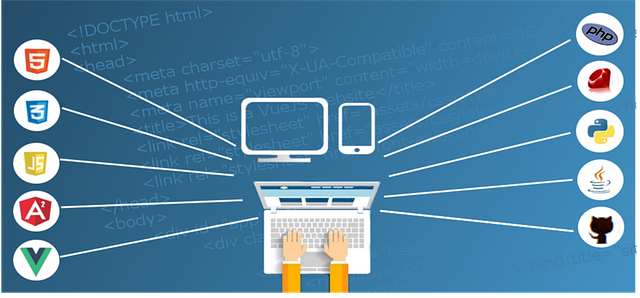Understanding affordable website development is vital for promoting digital accessibility, empowering small businesses and startups with cost-effective tools to create professional sites. By leveraging CMS, responsive design, and pre-built templates, developers can enhance visibility, brand credibility, and customer engagement without breaking the bank. Open-source vs. pre-built builders, simplicity in design, content optimization, SEO techniques, outsourcing vs. in-house teams, and regular maintenance are key considerations for budget-conscious website development, ensuring quality and long-term success in a dynamic digital landscape.
In today’s digital landscape, a robust online presence is non-negotiable, especially for small businesses aiming to thrive. Affordable website development offers an accessible gateway to e-commerce success without breaking the bank. This comprehensive guide explores cost-effective strategies, from platform selection and design optimization to content creation and SEO basics. By understanding these principles, business owners can unlock digital accessibility, ensuring their websites are both functional and affordable.
Understanding Affordable Website Development: Unlocking Digital Accessibility

Understanding affordable website development is key to unlocking digital accessibility for businesses and individuals alike. It’s about creating websites that are not only cost-effective but also functional, visually appealing, and optimized for search engines. By leveraging advanced yet user-friendly tools and platforms, developers can build high-quality sites without breaking the bank. This democratizes online presence, enabling small businesses and startups to compete with larger entities.
The concept goes beyond just cutting costs; it’s about finding innovative solutions that balance quality and affordability. Modern technologies like content management systems (CMS), responsive design, and pre-built templates play a significant role in making website development more accessible. These tools streamline the process, reduce development time, and minimize ongoing maintenance costs, ultimately making professional websites an achievable goal for everyone.
The Benefits of Cost-Effective Web Solutions for Small Businesses

Small businesses often face tight budgets, making it challenging to allocate significant resources for website development. However, cost-effective web solutions have emerged as a game-changer, offering affordable and accessible ways to create professional online presences. These solutions provide small enterprises with the ability to compete in the digital realm without breaking the bank.
By opting for efficient Website Development strategies, businesses can benefit from increased visibility, enhanced brand credibility, and improved customer engagement. With user-friendly interfaces and customizable templates, these cost-efficient tools empower entrepreneurs to build websites that reflect their unique identity. Moreover, they often come with integrated features like SEO optimization, mobile responsiveness, and analytics tracking, ensuring that small businesses stay ahead of the curve in a highly competitive online market.
Choosing the Right Platform: Open-Source vs. Pre-Built Website Builders

When it comes to website development, choosing the right platform is a pivotal step, especially for those on a tight budget. One key decision point is whether to opt for open-source or pre-built website builders. Open-source platforms offer a level of customization and flexibility that can be appealing, as they allow developers to tailor code precisely to meet specific needs. This option provides complete control over the final product and can lead to cost savings in the long run by eliminating reliance on third-party support.
However, pre-built website builders present a more accessible and faster alternative. These platforms come with ready-made templates and drag-and-drop interfaces, making them user-friendly for non-coders. While they might not offer the same level of customization as open-source solutions, they are significantly quicker to launch, allowing businesses to hit the ground running with a functional website in less time and with fewer resources. For affordable website development, pre-built builders can be an excellent starting point, providing a solid foundation for online presence without breaking the bank.
Design Strategies to Keep Costs Low Without Compromising Quality

When developing a website, design strategies that prioritize cost-effectiveness without sacrificing quality are essential for affordable website development. One effective approach is to focus on simplicity and minimalism in both aesthetics and functionality. Clean, uncluttered designs with intuitive navigation not only reduce development time but also lower costs associated with complex features. Using standard templates or pre-built components can significantly streamline the process while maintaining a professional look.
Moreover, leveraging open-source tools and platforms can substantially cut expenses without compromising functionality. These resources offer robust features that can be tailored to specific needs, eliminating the need for custom development. Additionally, optimizing for mobile responsiveness from the outset ensures your website functions seamlessly across various devices, avoiding future costs of separate desktop and mobile versions.
Content is King: Optimizing Your Site's Content for Budget Development

In the realm of affordable website development, content is often the linchpin that holds a site together and attracts visitors. With limited budgets, it’s essential to prioritize creating high-quality, relevant content that not only informs but also engages your target audience. Optimizing your site’s content involves strategic keyword placement, ensuring every piece of text contributes to improving search engine rankings without compromising readability. Well-crafted content can be a powerful tool to drive organic traffic and enhance user experience, both vital aspects of successful website development on a budget.
When developing or revamping your website, focus on creating comprehensive, unique content that addresses common queries related to your niche. This might include blog posts, product descriptions, or informative guides. Incorporating keywords naturally into headings, subheadings, and body text improves search engine optimization (SEO), making it easier for potential customers to find you online. Remember, content is not just about words; it’s also about visuals, videos, and interactive elements that keep visitors engaged, encouraging them to explore more of your site and ultimately increasing the chances of conversion or desired action.
SEO Basics: Enhancing Visibility on a Limited Budget

In the realm of affordable website development, understanding Search Engine Optimization (SEO) fundamentals can significantly boost online visibility without breaking the bank. One of the key aspects to focus on is optimizing content for relevant keywords; this involves strategically placing them in titles, headings, and meta descriptions. By doing so, search engines like Google can easily index your site, making it more likely to appear in top results for targeted queries. Additionally, creating high-quality, engaging content that satisfies user intent can improve both the quantity and quality of backlinks, which are crucial for SEO success.
Beyond content optimization, technical SEO plays a vital role in enhancing your website’s performance. Ensuring your site is mobile-friendly, fast-loading, and secure (HTTPS) are essential practices that search engines favor. Utilizing free SEO tools available online can help identify areas for improvement, such as fixing broken links or optimizing images. These simple yet effective strategies enable cost-conscious developers to navigate the digital landscape, ensuring their clients’ websites gain traction and attract organic traffic without excessive expenses.
Outsourcing vs. In-House Development: Cost Analysis and Considerations

When considering affordable website development, a key decision point is whether to outsource or establish an in-house team. Outsourcing involves contracting work to external specialists, while in-house development requires hiring and managing a dedicated team. Cost analysis reveals that outsourcing can be more economical for smaller businesses with limited budgets due to lower overhead expenses. It eliminates the need for office space, equipment purchases, and employee benefits, significantly reducing initial investment.
However, in-house development offers control over quality and timeline. It allows for direct communication with developers, fostering a deeper understanding of the project’s vision. While initial costs may be higher, long-term savings can result from avoiding recurring outsourcing fees and ensuring consistent expertise. Ultimately, the choice depends on individual business needs, budget constraints, and the desired level of control over the development process.
Future-Proofing Your Website: Maintenance and Scalability Tips

As your website develops and grows, future-proofing becomes essential for any affordable website development strategy. Regular maintenance checks are crucial to ensure your site remains secure and up-to-date with the latest software patches. Keeping your platform and all plugins or extensions regularly updated is vital to prevent vulnerabilities that could expose your data or users’ information to potential risks. A robust content management system (CMS) should make this process straightforward, allowing you to implement updates efficiently without disrupting your site’s functionality.
Scalability is another critical aspect of future-proofing. Anticipating growth and designing your website with flexibility in mind will ensure it can handle increased traffic and data demands as your business expands. Cloud hosting solutions offer scalability options that allow you to easily adjust resources based on usage, ensuring optimal performance during peak times. By implementing these maintenance and scalability tips, you’ll create a solid foundation for your website’s long-term success and adaptability in the dynamic landscape of website development.
